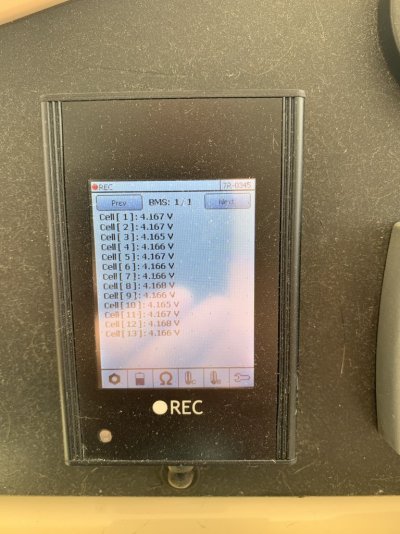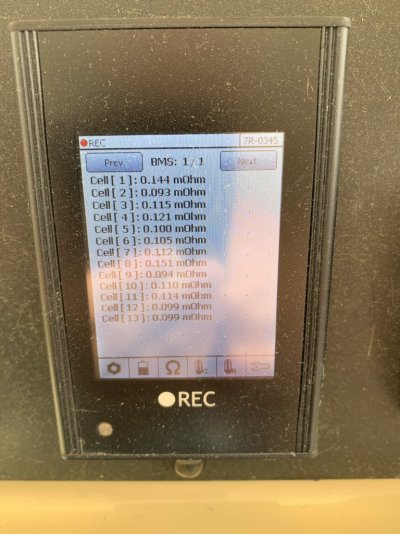The AC code 0004 is a normal thing after a full charge on shore power. When I originally got my boat, the BMS alarm sounded for a short time (~30 mins) at the end of a full shore power charge cycle. Both dealer and factory told me to ignore it, so I did, as it wasn't too disturbing. Fast-forward to 2019, when I had the factory (SVP) come to Sweden to replace my battery, they replaced my BMS too with a newer REC model. Just like before, at the end of the shore power charging cycle, the alarm goes off for ~30 minutes, but it's only "visual" as I had an REC BMS monitor installed at the helm and they silenced the audio alarm. I could see the temp ( a few degrees over the BMS threshold) in the monitor for ~30 mins. Factory told me that this was acceptable and to ignore it, so that's what I've done. No issues.
In your case, however, I absolutely agree that the BMS alarm should not be going off for any charging by the diesel engine or solar. While changing the BMS alarm threshold could be done, I, personally, would prefer to know the root cause. Why is it doing this? I fear that in this case, the alarm is trying to tell you about something serious that should be addressed.
One thing I will mention to you here, that is likely not relevant, but good to know anyway, is that in the early GL33's, the round, white, ceramic relay switch mounted on the top of the battery was known to fail. It happened to me twice and then the factory sent me a replacement relay along with some additional unit to install to help prevent the relay from failing in the future. This same setup was what they also put on my new battery & BMS installation. You will know when this relay fails because the BMS alarm will sound and you will see the battery is charging to OVER 54.6v, which is deadly for the battery's health. The first time this happened to me, I was not connected to shore power, but using only Solar charging. The only way I could stop the run-away charging was to disconnect the Outback solar charge controller (simple - just requires a screwdriver to disconnect either the red or the black cable).
I have found the factory after-sales department very helpful with such matters. They are the ones that handled my battery & BMS replacement (also upgraded solar panels) in 2019. You can contact them at
aftersales@svpyachts.com. They have answered a wide variety of technical questions for me over the years via e-mail.



